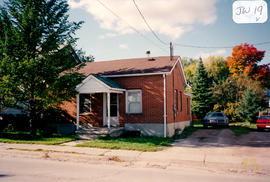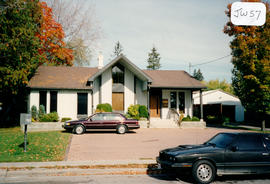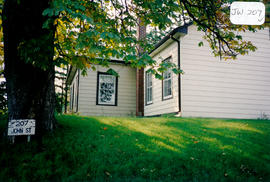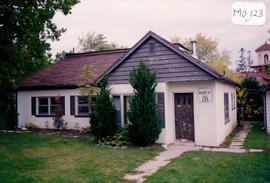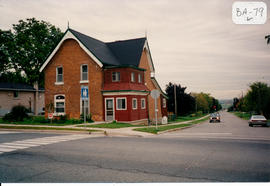- CA BWGPL GJ-HB-2017-04-05-05
- Pièce
- 1995
Fait partie de George Jackson fonds
The house located at 113 John St. East (on the southeast corner of John and Nelson Streets) was the last house on John Street East. This area was known as French Town at the time because of the French families living there who had come to Bradford to work at the sawmill and planing mills. Fred Stoddart’s pasture fields were over what is now called Colborne Street.
The small, one-storey, square-frame house with a cement cellar was built by Dan Collings in the 1940’s. He used materials from the barns behind his house in the construction. Dan eventually moved to Holland Street. He died in his 97th year. The house was sold to Couvert during World War II. Later it was owned by Len Fuller, his wife, and sons (George and Leonard). (1, 2, 4)
Sans titre


